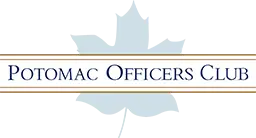Introduction
Since 2002, Executive Mosaic’s digital properties have offered readers fact-based, daily breaking news about the business of government defense contracting, as well as featured profiles on high-level corporate executives and government officials. We actively work to form professional relationships with those we cover in our news stories. Our editorial stance is then a neutral one. We do not portray our main subjects in a negative light or present opinions about how successful our subjects may be as fact. EM publishes three central newsletters. GovConWire, sent at 6 a.m., recaps significant industry developments, such as executive moves, contract awards, and merger and acquisition activity. ExecutiveBiz is sent at noon and covers trends in technology, business, and politics that affect our readership. At 5 p.m., GovConDaily is distributed, which includes market outlooks and perspectives from both the private and public sectors. These guidelines ensure we adhere to company-wide standards of writing style, mechanics, and grammar. This document will ensure that a writer or editor in the Tysons, Va., office is adhering to the same style as a writer or editor in the Philippines and vice versa.
The Executive Mosaic News Writing Process
The news writing process at Executive Mosaic begins with researchers identifying potential story material in publicly available sources of information, including:
- Corporate press releases
- Official government announcements
- Media stories
- Information databases
Writers then use information from those sources to write news stories that are:
- Original (not plagiarized)
- Accurate
- Neutral
- Properly attributed
- Professional (in format and style)
Every news story we publish relates to a newsworthy event or action that has occurred in the past or will happen in the future. To the best report on the significance and nature of the action or event, each story we publish follows a writing model that features three sections:
The requisite characteristics are the components that cause the event/action to occur and form the event/action’s core attributes. These components are the fundamental nature of the event/action, and you could not fully explain the basics of the event/action without them.
Important details relate to or provide specifics about the fundamental components, but are not essential for a reader to understand the most critical aspects of the news story.
Background information refers to tangentially-related facts that form a broader context about the nature of the event/action.
Editing EM drafts
EM stories pass the five pillars to ensure that we continually improve our professional standing at the forefront of our industry. This means all drafts are ANCOP:
- Accurate
- Neutral
- Clear
- Original (not plagiarized) and Properly attributed
Intent
The writing intends to report (using the inverted pyramid form) to inform industry watchers of significant developments and activity.
Style
The writing style involves company and executive perspective(s) where possible, includes the right information and excludes extraneous data.
Format
The format of the writing adheres to the news blog and online media publication model with Proper links, tags, images Social media component - Twitter, Facebook, Google+, LinkedIn
Accuracy
Accuracy is crafting an original write-up while correctly representing all facts and context from the source material.
Few, if any, things are more important than being accurate.
Neutrality
To ensure neutrality, we prioritize information that describes the nature of the event or activity—not how successful that activity will be.
Neutrality is all about reporting and writing, as opposed to assuming things. It strips facts out of opinionated text to make these your usable information.
All texts include tangible activity with specific and measurable characteristics. We never include goals that are neither measurable nor specific.
Clarity
The litmus test if a sentence is clear is the question, “Can any reader understand what the writer is writing?”
Our posts are written for an executive audience, but all the main activities must be understood by anyone who reads the article.
Originality
Whatever the source material is, it is NOT to be viewed as the structure or “skeleton” of your story. The source material is information and research.
We do not “rewrite” stories. We do not take someone else’s text and change the order of information and some words to make it appear as an original piece. It is their information, our words.
To achieve this, we construct a story with unique:
Word use
Sentence construction
Order of story information
Proper Attribution
We let the audience know where the information originates. After initial attribution, there needs to be at least one more non-quote attribution in the story.
We ensure that information is correctly attributed. Source materials will often use information from third parties, reports, interviews, etc. The original source needs to be attributed in addition to the source where you found the information.
If the source material is from a media site, link to the source material and the author’s archive on the source material site.
